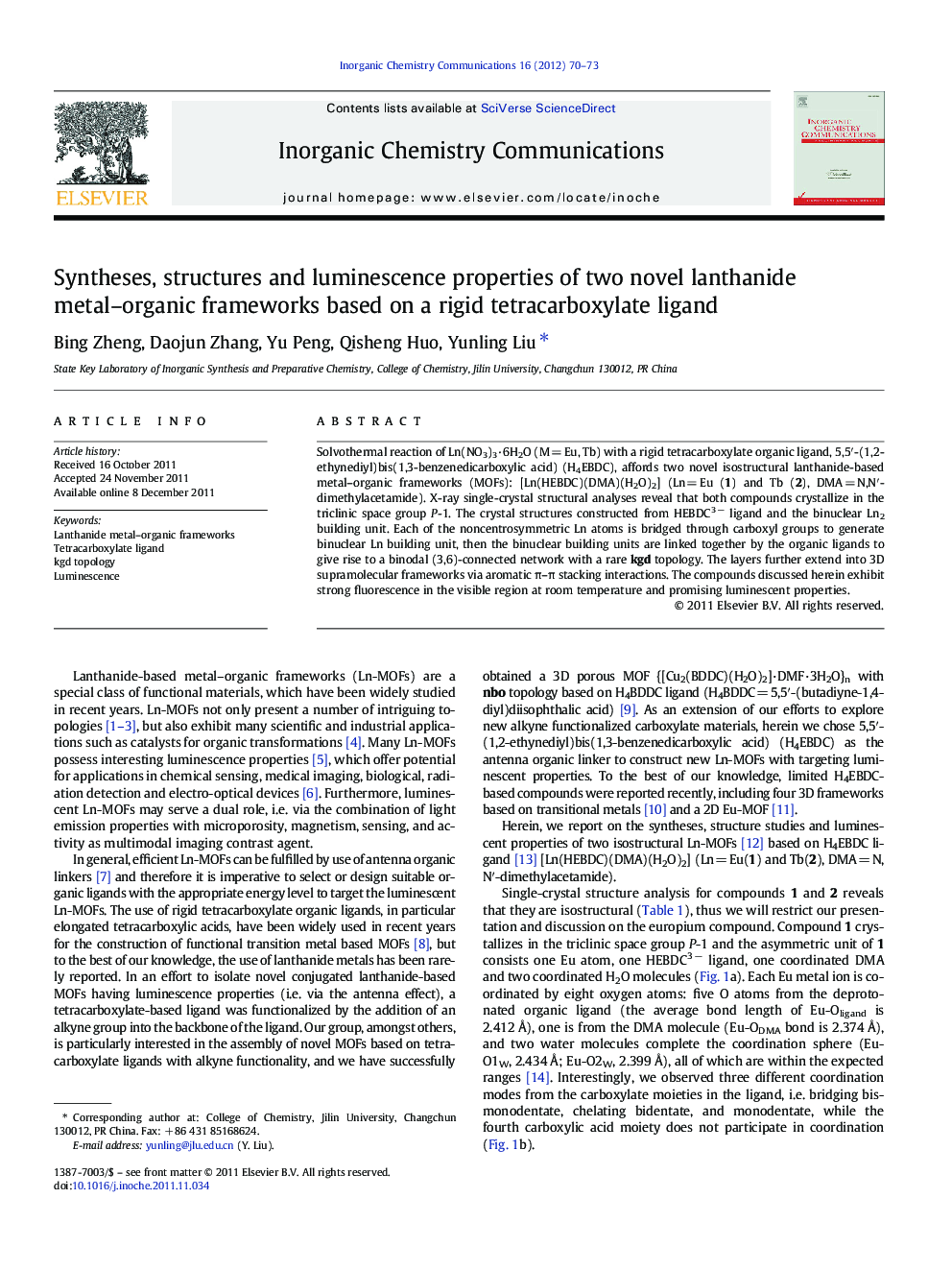| Article ID | Journal | Published Year | Pages | File Type |
|---|---|---|---|---|
| 1304265 | Inorganic Chemistry Communications | 2012 | 4 Pages |
Solvothermal reaction of Ln(NO3)3·6H2O (M = Eu, Tb) with a rigid tetracarboxylate organic ligand, 5,5′-(1,2-ethynediyl)bis(1,3-benzenedicarboxylic acid) (H4EBDC), affords two novel isostructural lanthanide-based metal–organic frameworks (MOFs): [Ln(HEBDC)(DMA)(H2O)2] (Ln = Eu (1) and Tb (2), DMA = N,N′-dimethylacetamide). X-ray single-crystal structural analyses reveal that both compounds crystallize in the triclinic space group P-1. The crystal structures constructed from HEBDC3 − ligand and the binuclear Ln2 building unit. Each of the noncentrosymmetric Ln atoms is bridged through carboxyl groups to generate binuclear Ln building unit, then the binuclear building units are linked together by the organic ligands to give rise to a binodal (3,6)-connected network with a rare kgd topology. The layers further extend into 3D supramolecular frameworks via aromatic π–π stacking interactions. The compounds discussed herein exhibit strong fluorescence in the visible region at room temperature and promising luminescent properties.
Graphical abstractTwo novel lanthanide MOFs [Ln(HEBDC)(DMA)(H2O)2] (Ln = Eu (1) and Tb (2)), featuring unusual binodal (3, 6)-connected kgd topology, have been synthesized. Compounds 1 and 2 exhibit strong fluorescence in the visible region at room temperature.Figure optionsDownload full-size imageDownload as PowerPoint slideHighlights► Two novel lanthanide MOFs based on rigid tetracarboxylate ligand have been synthesized. ► (3, 6)-connected network with kgd topology. ► The compounds exhibit luminescence emission.
